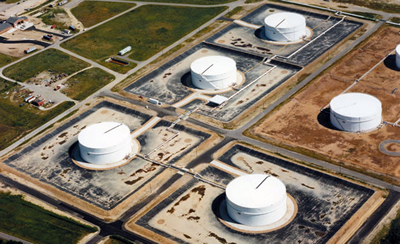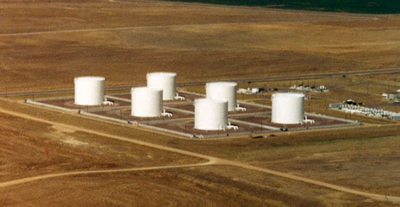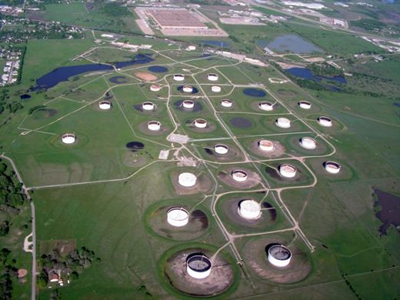 By Daniele Cazzuffi – RemTech 2013 will be held 18-20 September 2013 in Ferrara, Italy. This marks the 7th edition of a growing international event focused on remediation technologies. The two-part article presented here, which is adapted from the paper “Safety containment systems, including geosynthetics as possible prevention in the event of hydrocarbon tanks failure,” is a strong example of the types of topics that RemTech participants exchange knowledge on. Part 1 introduces the subject and the primary research. In Part 2, the results of the research are presented. Seven types of geomembranes were included in this study.
By Daniele Cazzuffi – RemTech 2013 will be held 18-20 September 2013 in Ferrara, Italy. This marks the 7th edition of a growing international event focused on remediation technologies. The two-part article presented here, which is adapted from the paper “Safety containment systems, including geosynthetics as possible prevention in the event of hydrocarbon tanks failure,” is a strong example of the types of topics that RemTech participants exchange knowledge on. Part 1 introduces the subject and the primary research. In Part 2, the results of the research are presented. Seven types of geomembranes were included in this study.
**

One of the first examples of the use of geomembranes as permanent secondary containment liners was the rehabilitation carried out in 1997 in United States of the fuel tanks of the Craney Island Fuel Terminal in Portsmouth, Virginia (Shehane, 2001). A reinforced 0.8 mm thick geomembrane, with resistance to all grades of jet fuel, was installed on about 80.000 m2 of the dike liners and left exposed. The original design called for about 0.2 m soil cover with grass over the geomembrane, but it was decided to leave the geomembrane exposed, also to eliminate the need for maintenance crews to cut the grass and to reduce the clean-up costs in case of a fuel spill (no expense for removal of contaminated soil).
Another example of permanent secondary containment with geomembrane liners is given by the concrete walls and containment area floors of the Denver International Airport tank system. These zones were overlaid with 50.000 m2 of reinforced ethylene copolymer alloy geomembrane.
This type of geomembrane was previously tested in constant contact with Jet A (commercial jet fuel) for 6.5 years with no substantial damage or loss of strength (www.xr-5.com).

The purpose of the long-term laboratory experimental activity developed at CESI in Milano and presented in this paper is to study the behaviour of different types of geomembranes, commonly available on the European market, when in contact with diesel fuel for a prolonged period of time.
GEOMEMBRANES IN SECONDARY CONTAINMENT
Geomembranes are used extensively in secondary containment applications, such as for spill protection with chemical storage tanks. Geomembranes are made by combining one or more thermoplastic polymers with additives, like plasticizers, carbon black, processing aids, anti-oxidants. A wide range of thermoplastics resins are used for geomembranes, including high density polyethylene (HDPE), very low density polyethylene geomembrane (VLDPE), polyvinyl chloride (PVC), polypropylene (PP).
When selecting the type of secondary containment to use, one must consider the geomembrane’s compatibility with the type of substance or waste to be contained, its durability, and its resistance to fire, heat and sunlight. Therefore, mechanical properties (such as tensile behaviour and tear resistance) and durability properties (e.g., heat resistance) are properties of the geomembranes that should be examined to determine the most appropriate material in relation to the final use. The tensile properties refer to the tensile strength of a geomembrane and the ability of the material to elongate under stress. These properties must be sufficient to satisfy the stresses (for example self-weight) and the strains (for example, not exceeding the yield strain for HDPE) anticipated during its service life.
Geomembrane liners can also be subjected to tearing during installation due to high winds or handling. Exposure to atmosphere and temperature changes can cause degradation in the geomembrane if it is exposed for a prolonged period of time. Not only the geomembrane capacity to withstand long-term contact with whatever the secondary containment hold must be investigated, but also the capacity to meet the requirements typical of a barrier system for the entire life of the storage tanks.
Finally, probable risk and severity of potential spills, cost and ease of installation have to be taken into account.
Among the different types of oils to be stored in secondary containment systems, for the experimental activity described here it was considered important to evaluate the behaviour of geomembranes in presence of diesel fuel. Diesel fuel has to be stored at burner facilities and it may be also present in landfills, due to disposal of transportation related substances and diesel-contaminated media or diesel-powered engine parts.
The selected diesel fuel was the diesel fuel commonly used in Italy for cars and trucks.
LABORATORY LONG-TERM EXPERIMENTAL STUDY

Seven types of geomembranes were exposed to diesel fuel for eight months. The selected geomembranes, representing different types and polymers, were:
- HDPE-1 and HDPE-2 (high density polyethylene, manufactured by different companies)
- CHD (modified high density polyethylene)
- MP-G (modified polyethylene reinforced with glass fibres)
- VLDPE (very low density polyethylene)
- PVC (polyvinyl chloride)
- PVC-P (plasticised polyvinyl chloride)
All the considered geomembranes were 2.00 mm in nominal thickness, with the exclusion of the two made of PVC, that were 1.50 mm in nominal thickness.
Different specimens of 700 mm x 700 mm were cut from the seven geomembrane samples subjected to the experimental activity at the Geosynthetics and Environmental Geotechnics Laboratory at CESI in Milano. The edges of the specimens were wrapped in such a manner to obtain containers in which the diesel fuel was poured and then retained without leakages (Figure 5).
The geomembrane specimens were left in contact with the diesel fuel at 20° C for a maximum of eight months and, during this time period, the level of the diesel fuel was kept equal to 40 mm. Regular additions were made in order to compensate the lowering of the diesel fuel level due to evaporation. No agitation was foreseen in the immersion tank.
Figure 5. Cross-section of the immersion tank containing a geomembrane specimen for a prolonged period.
Laboratory tests were performed on the virgin material samples and on the different samples respectively after one, two, four and eight months of contact with diesel fuel, aiming at determining the chemical-physical, mechanical and hydraulic properties of the geomembranes and their evolution with time.
Tests included:
- Nominal thickness (ASTM D 5199)
- Thermo-gravimetric analysis (ASTM E 1131)
- Density (ISO 1183)
- Shore A hardness (ISO 868)
- Tensile stress and strain (ASTM D 638)
- Tear strength (ASTM D 1004)
- Cold bending (ASTM D 2136)
- Dimensional stability (ASTM D 1204)
- Water vapour permeability (ASTM E 96)
These selected tests allowed a direct comparison among all seven types of geomembranes; therefore, specific tests valid only for some types of geomembranes, as HP-OIT tests for PE materials and plasticizer content for PVC materials, were not performed in this study.
See PART 2 for results of the study
Dr. Eng. Daniele Cazzuffi works for CESI SpA and is the chair of RemTech 2013’s scientific committee. He previously served as the President of the International Geosynthetics Society (IGS) Council.












